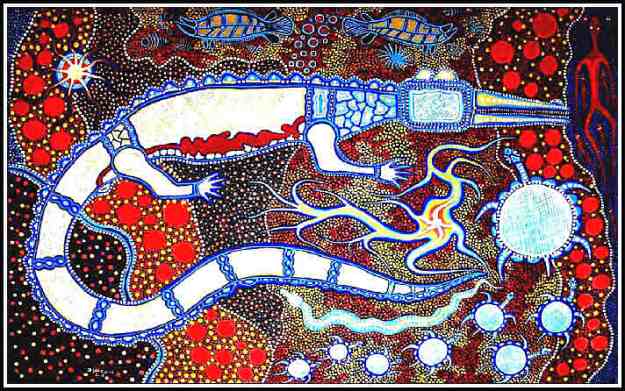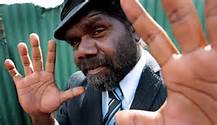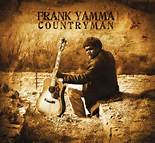There are no clear tribes or an accepted origin of the indigenous people of Australia, although they are believed to be among the earliest human migrations out of Africa. Although they likely migrated to Australia through Southeast Asia they are not demonstrably related to any known Asian or Polynesian population. There is evidence of genetic and linguistic interchange between Australians in the far north and the Austronesian peoples of modern-day New Guinea and the islands, but this may be the result of recent trade and intermarriage.
It is believed that first human migration to Australia was achieved when this landmass formed part of the Sahul continent, connected to the island of New Guinea via a land bridge. It is also possible that people came by boat across the Timor Sea. The exact timing of the arrival of the ancestors of the Aboriginal Australians has been a matter of dispute among archaeologists. The most generally accepted date for first arrival is between 40 000–80 000 years BP. In 1971 finds of Aboriginal stone tools in a quarry in Penrith in New South Wales were dated to 47 000 years BP. A 48 000 BCE date is based on a few sites in northern Australia dated using thermoluminescence. A large number of sites have been radiocarbon dated to around 38 000 BCE, leading some researchers to doubt the accuracy of the thermoluminescence technique. Radiocarbon dating is limited to a maximum age of around 40,000 years. Some estimates have been given as widely as from 30,000 to 68,000 BCE. Charles Dortch has dated recent finds on Rottnest Island, Western Australia at 70,000 years BP. The rock shelters at Malakunanja II (a shallow rock-shelter about 50 kilometres inland from the present coast) and of Nauwalabila I (70 kilometres further south) show evidence of used pieces of ochre – evidence for paint used by artists 60,000 years ago. Using OSL Rhys Jones has obtained a date for stone tools in these horizons dating from 53,000–60,000 years ago.
Thermoluminescence dating of the Jinmium site in the Northern Territory suggested a date of 200,000 BCE. Although this result received wide press coverage, it is not accepted by most archaeologists. Only Africa has older physical evidence of habitation by modern humans. There is also evidence of a change in fire regimes in Australia, drawn from reef deposits in Queensland, between 70 and 100,000 years ago, and the integration of human genomic evidence from various parts of the world also supports a date of before 60,000 years for the arrival of Australian Aboriginal people in the continent.
Humans reached Tasmania approximately 40,000 years ago by migrating across a land bridge from the mainland that existed during the last ice age. After the seas rose about 12,000 years ago and covered the land bridge, the inhabitants there were isolated from the mainland until the arrival of European settlers.
Short statured aboriginal tribes inhabited the rainforests of North Queensland, of which the best known group is probably the Tjapukai of the Cairns area. These rainforest people, collectively referred to as Barrineans, were once considered to be a relic of an earlier wave of Negrito migration to the Australian continent, but this theory no longer finds much favour.
Mungo Man, whose remains were discovered in 1974 near Lake Mungo in New South Wales, is the oldest human yet found in Australia. Although the exact age of Mungo Man is in dispute, the best consensus is that he is at least 40,000 years old. Stone tools also found at Lake Mungo have been estimated, based on stratigraphic association, to be about 50,000 years old. Since Lake Mungo is in south-eastern Australia, many archaeologists have concluded that humans must have arrived in north-west Australia at least several thousand years earlier.
In 2012, the results of large-scale genotyping has indicated that Aboriginal Australians, the indigenous peoples of New Guinea and the Mamanwa, an indigenous people of the southern Philippines are closely related, having diverged from a common origin approximately 36,000 years ago. The same studies show a substantial gene flow between Indian populations and Northern Australia occurred around 4,230 years ago. Changes in tool technology, food processing and the Dingo appear in the archaeological record around this time, suggesting there may have been migration from India.
Pitjantjatjara is the name of both an Aboriginal people of the Central Australian desert, and their language. They are closely related to the Yankunytjatjara and Ngaanyatjarra and their languages are, to a large extent, mutually intelligible (all are varieties of the Western Desert Language).
They refer to themselves as Anangu (people). Pitjantjatjara country is mostly in the north-west of South Australia, extending across the border into the Northern Territory to just south of Lake Amadeus, and west a short distance into Western Australia. The land is an inseparable and important part of their identity, and every part of it is rich with stories and meaning to Anangu.
They have, for the most part, given up their nomadic hunting and gathering lifestyle but have retained their language and much of their culture in spite of increasing influences from the broader Australian community.
Today there are still about 4,000 Anangu living scattered in small communities and outstations across their traditional lands, forming one of the most successful joint land arrangements in Australia with Aboriginal Traditional Owners.
The name Pitjantjatjara derives from the word pitjantja, a form of the verb ‘go’ which, combined with the comitative suffix -tjara means something like ‘ pitjantja-having’ (i.e. the variety that uses the word pitjantja for ‘go’).
A 73,000 square kilometre tract of land was established in the north west of South Australia for the Pitjantjatjara in 1921 after they lost much land due to hostile encroachment by hunters and ranchers.
Extended droughts in the 1920s and between 1956 to 1965 in their homelands in the Great Victoria and Gibson Deserts led many Pitjantjatjara, and their traditionally more westerly relations, the Ngaanyatjarra, to move east towards the railway between Adelaide and Alice Springs in search of food and water, thus mixing with the most easterly of the three, the Yankunytjatjara. They refer to themselves as Anangu, which originally just meant people in general, but has now come to imply an Aboriginal person or, more specifically, a member of one of the groups that speaks a variety of the Western Desert Language.
In response to continuing outside pressures on the Anangu, the South Australian Government gave its support to a plan by the Presbyterian Church to set up the Ernabella Mission in the Musgrave Ranges as a safe haven. This mission, largely due to the actions of their advocate, Dr. Charles Duguid, was ahead of the times in that there was no systematic attempt to destroy Aboriginal culture, as was common on many other missions.
From 1950 onwards, many Anangu were forced to leave their homelands due to British nuclear tests at Maralinga. Some Anangu were subsequently contaminated by the nuclear fallout from the atomic tests, and many have died as a consequence. Their experience of issues of land rights and native title in South Australia has been unique. After four years of campaigning and negotiations with government and mining groups, the Pitjantjatjara Land Rights Act was passed on 19 March 1981, granting freehold title over 103,000 square kilometres of land in the northwestern corner of South Australia.
The sacred sites of Uluru (Ayers Rock) and Kata Tjuta (the Olgas) possess important spiritual and ceremonial significance for the Anangu with more than forty named sacred sites and eleven separate Tjurkurpa (or ‘Dreaming’) tracks in the area, some of which lead as far as the sea. Ayers Rock and The Olgas are separated from the Pitjantjatjara Lands by the border between the Northern Territory and South Australia and have become a major tourist attraction and a National Park. The Central Land Council laid claim to the Ayers-Rock-Mount Olga National Park and some adjoining vacant Crown land in 1979, but this claim was challenged by the Northern Territory government.
After years of intensive lobbying by the Land Council, on 11 November 1983, Prime Minister Bob Hawke announced that the Federal Government intended to transfer inalienable freehold title to them. He agreed to ten main points they had demanded in exchange for a lease-back arrangement to the Australian National Parks and Wildlife Service in a “joint-management” régime where Anangu would have a majority on the Board of Management. This was implemented in 1985, after further negotiations extended the lease period from 50 to 99 years and agreement was reached on the retention of tourists’ access to Ayers Rock. (Wikipedia)
Tonight’s selection is an album of very Australian outback music, Countryman by Frank Yamma. The sounds are as broad and rugged as Uluru, the great stony hump at the very centre of Australia.
| Frank Yamma is a traditional Pitjantjatjara man from Australia’s central desert and speaks five languages. An extraordinary songwriter and an exceptional guitarist, Frank Yamma also has an incredible voice, rich, deep and resonant. Regarded by many as one of Australia’s most important Indigenous Songwriters, Yamma‘s brutally honest tales of alcohol abuse, cultural degradation, respect for the old law and the importance of country are spine tingling. His ability to cross cultural and musical boundaries constantly sets new standards through his music.
The release of Frank’s latest CD Countryman drew immediate attention along with critical acclaim, attracting national play listing on Australia’s national broadcaster ABC Radio, “Album of the Week” on Australia’s foremost alternative radio station Triple R, bookings for Australian festivals including Port Fairy Folk Festival, Byron Bay Music Festival as well as international performance dates for the City of London Festival and Austrian Music Festival “Colours of Ostravia”, an invitation to showcase at this years WOMEX, UK distribution through Proper Records, a four page “Songlines Magazine spread on Frank and record label Wantok Musik, and his album featuring on BBC3. “The voice grabs you first, a soulful shout of pain and yearning to connect and remember. But its the voice, relating hard tales with honesty and emotion, that makes this a raw, stripped-back classic.” “Album of The Week” Tim Cumming, The Independent (UK) ………..a gutsy and often pained set of ballads that veer between folk-pop and country. He saves many of his best melodies for the non-English-language songs, which include the epic and soulful Pitjantjara and Docker River, which sounds like an intense country weepie. Robyn Denselow, The Guardian (UK) Pitjantjatjara singer-songwriter Frank Yamma’s deadliest album to date.. Yamma’s rich, powerful voice resonates and is as spiritually charged as any of the songs on Geoffrey Gurrumul Yunupingu’s solo CD or Archie Roach’s albums. Tony Hillier, The Australian
Frank Yamma … received a standing ovation from a packed house for a performance that made up for any lack of polish with raw emotional power. Tony Hillier,Rhythms Magazine Tony Joe White brought his swamp blues to Fremantle and pleased his baby boomer fans from way back. But it was Frank Yamma that was the real joy of the night. Fasterlouder So overwhelmed were the audience with Yamma’s deeply emotional vocals and the poignancy of his songs that within days he was booked for, a big music festival in the Czech Republic and the City of London Festival. Bruce Elder, The Sydney Morning Herald
|
Track Listing:
01 She Cried
02 Kunka Kutcha
03 Docker River
04 I Didn’t Know Who You Were That Day
05 Remember The day
06 Nguta Waljilpa
07 Make More Spear
08 Calling Your Name
09 Down The River
10 Inside
11 Coolibah
12 Pitjantjara




